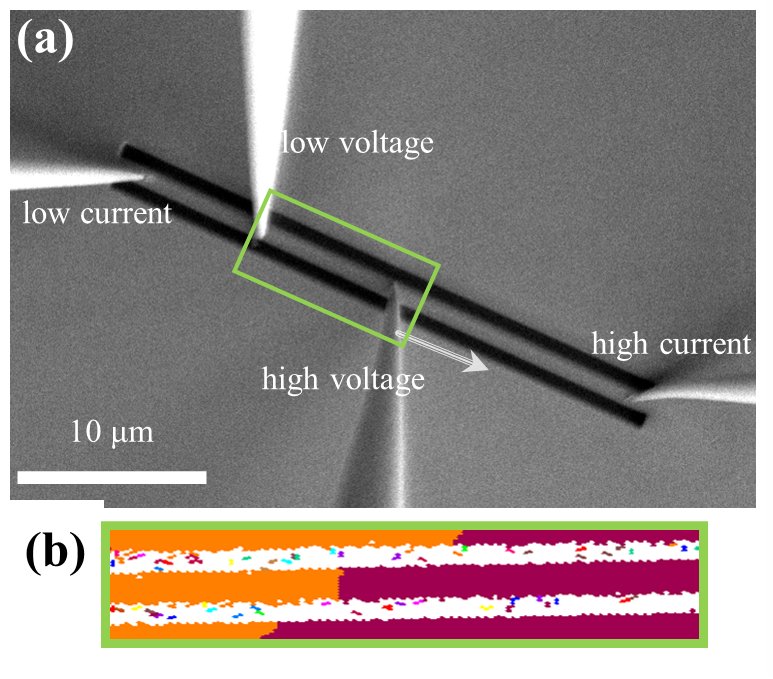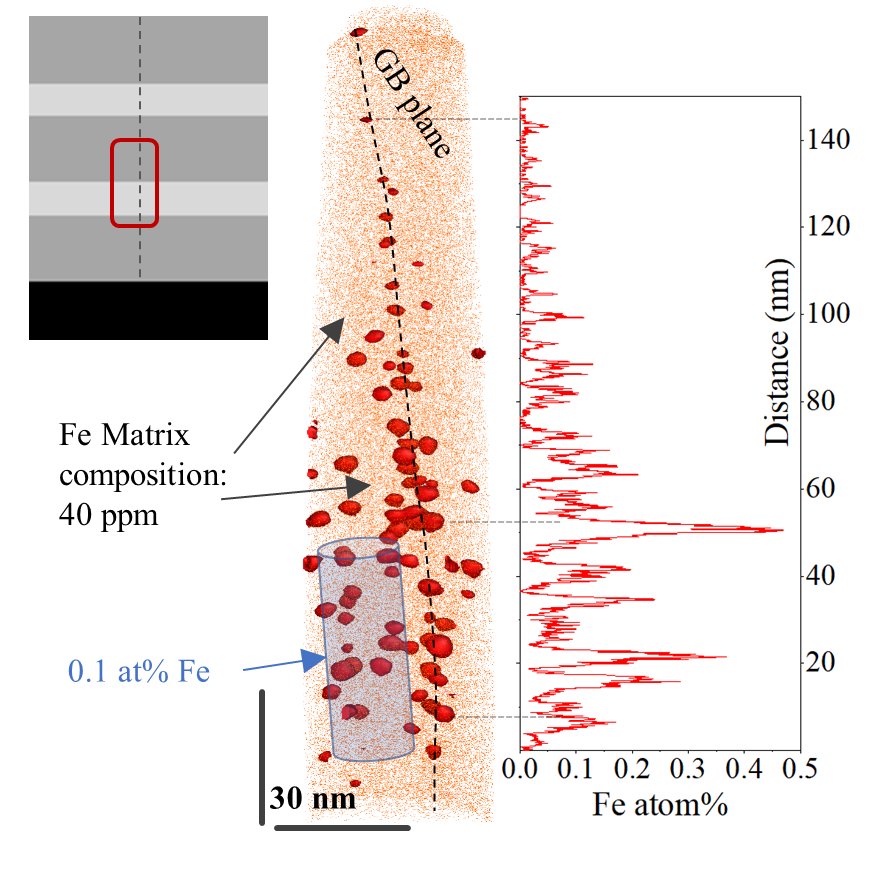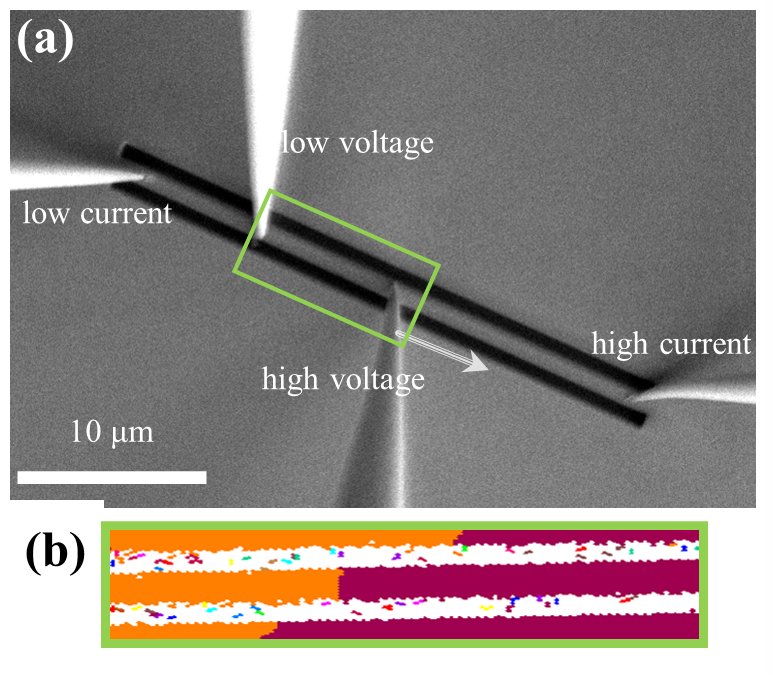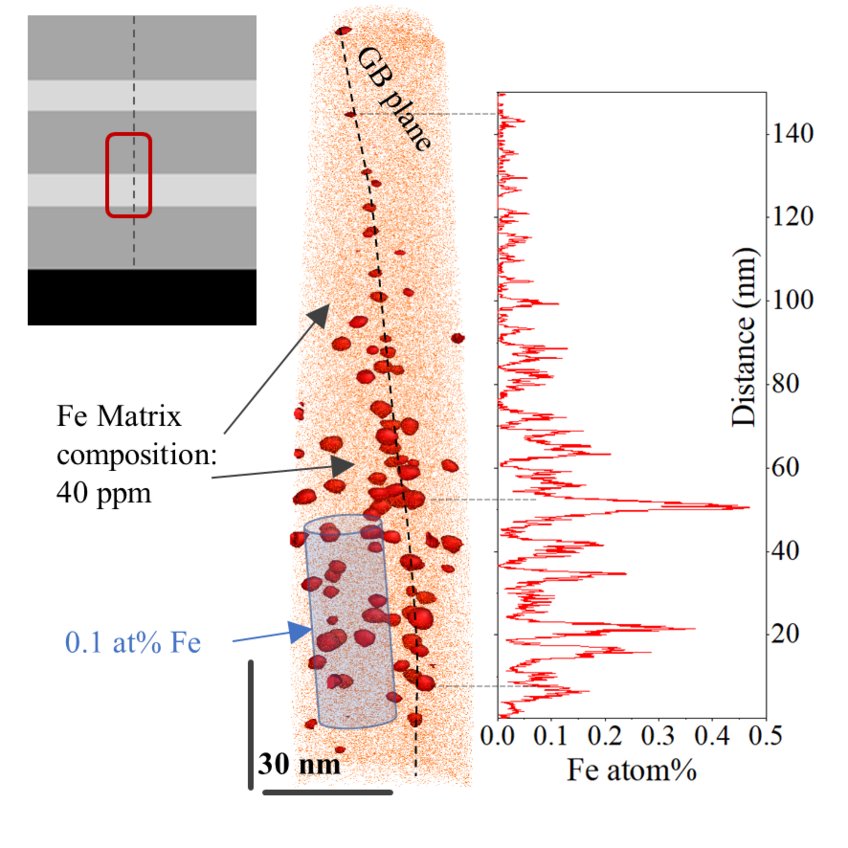Partner Group “Properties of decorated grain boundaries”
Alloying elements tend to accumulate in grain boundaries either as atomic segregants or precipitates. The group partners aim to distinguish between the segregation and precipitation impact on local physical properties of the boundaries.
The microstructure evolution of an alloy is dominantly affected by its chemistry and processing history. Usually, alloying elements tend to accumulate on the grain boundaries (GBs) leading to either segregation or precipitation phenomena. In each case, the contaminated GBs should behave differently in means of microstructure evolution, electrical properties, and mechanical properties. Even more, different types of GBs behave differently.
In the partner group, we decouple the impacts of atomic segregation and precipitate formation on the microstructure evolution and the physical properties. The Cu-based alloy's microstructure is controlled through processing, while micromechanics and SEM in-situ resistivity measurements are utilized to inspect mechanical and electrical properties.
The partnership between Defects and Interfaces Lab at Tel-Aviv University and MPIE was established in Summer 2023 for a duration of 5 years.



